The creative industries still have a gender problem. What can we do about it?
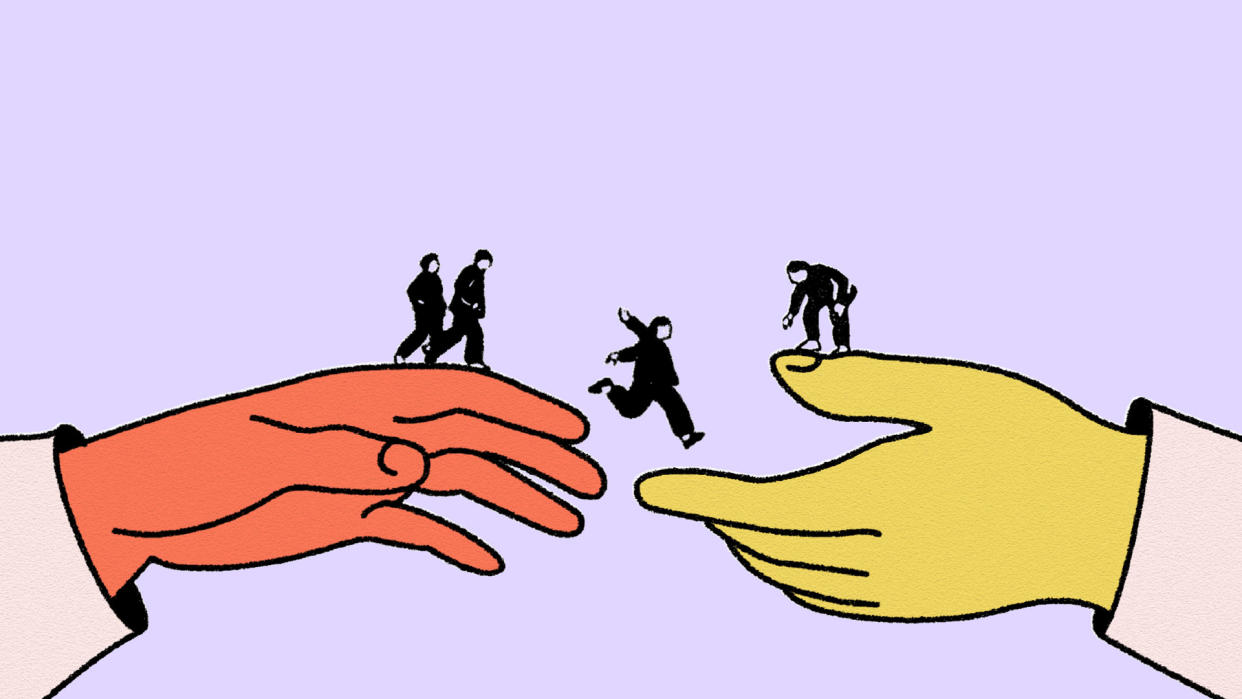
Five years ago around International Women's Day, I wrote a piece about gender in the design industry. The people I spoke to overwhelmingly thought that the design industry had a gender problem. At the time, only 17 per cent of creative directors were female, although women accounted for around 60-70 per cent of design graduates. There seemed to be an issue around retaining, promoting and nurturing female-identifying designers, although there were several initiatives such as Creative Equals, SheSays and Kerning The Gap that were attempting to change things.
In 2024, I want to know if things are different. This time, I've broadened the scope of my research to talk about the wider creative industries, speaking to those working in branding, design and VFX. As far as I can tell, the headline statistics don't seem to have changed much. At the current rate, The Konrad Wolf Film University of Babelsberg predicts that the UK is set to achieve a 50 per cent gender split across its key creative positions by 2085; 61 years from now.
The world has certainly evolved since 2019, though. We've experienced a global pandemic, and a working from home revolution that means for many of us, our working lives look completely different to five years ago. But have we made any progress when it comes to equal opportunities? And what can we do to make things fairer?
The current state of affairs

Among the people I spoke to (who were mostly self-selected and therefore not a representative sample), perceptions of just how much gender is affecting the creative industries varied, and largely seemed to depend on the type of company they were working for.
For some, like Boneli Lotilla, design director at New York agency minds + assembly, things are fairly equal at lower levels, but a gap appears when you get to senior leadership level. "This could be for numerous reasons like overall gender bias, women’s "traditional" role of being in the home and raising children, or a level of impostor syndrome that prevents women from being more vocal or upfront about their desire and ambition to be in a leadership position," suggests Boneli.
Her colleague, KC Chung, also a design director at minds + assembly, thinks it depends on the team. "Creative teams can skew to predominantly one gender versus another," she says. "For example, I’ve noticed when there are more male leaders at an agency, the creative department (both writing and design) tend to have a higher percentage of men as well. What then happens is the gender minority on the team often have a passive voice and are less involved."
It still feels like the ship is being steered in the same way that it has been for the past 30+ years
For Jess Parker, director at Craft, a Manchester-based global recruitment agency for the design and branding industry, things feel static in some ways: "It still feels like the ship is being steered in the same way that it has been for the past 30+ years." Yet there is hope: "with prominent voices speaking up, agencies and brands taking ownership over diversifying their board table and creative directors – as well as recruitment agencies working with prospective talents to close the gender pay gap – small waves are being made.
"There are still areas that need a lot of attention, like encouraging and instilling confidence in women to self-advocate for promotion, use the art of negotiation, and more boldly seek salaries that reflect their worth," she adds.
In the world of VFX, things don't look particularly bright. "A 2021 study by the Annenberg Inclusion Initiative and Women in Animation found that women received only 21.6 per cent of VFX credits on the 400 top grossing films," notes Klaudija Cermak, programme leader for VFX at animation, games and VFX training and teaching institution Escape Studios, "so it’s clear that there is still a lot of work to do".
"Gender has definitely impacted both mine and many women's careers on many levels in the VFX industry," says Klaudija. "We’ve historically faced glass ceilings and pay gaps, impacting not just our salaries, but our pensions too."
Things are definitely changing and improving for the better though, and what were exceptions to the rule are now becoming more common
Klaudija is positive for the future though, "Things are definitely changing and improving for the better though, and what were exceptions to the rule are now becoming more common."
Interestingly, no one who identified as male responded to my call out to be interviewed on this subject, but it would be useful to find out whether other people across the gender spectrum believe there's an issue here.
The motherhood penalty
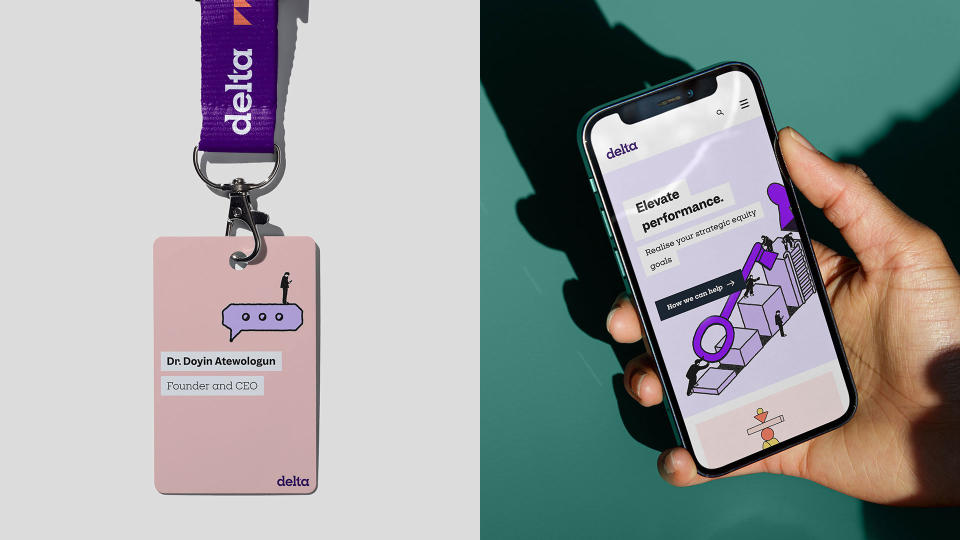
Back in 2019, Nat Maher of Kerning The Gap spoke about how we need to move on from 'the baby question'. "70 per cent of graduates are women but 11 per cent of creative directors are female, so there aren’t enough babies to account for that being the only reason," she said at the time, before adding that when we only look at 'the baby question', we forget to look at what else is going on.
But overwhelmingly, the people I spoke to did mention motherhood as something that affects women's careers, so it seems that we can't move on from 'the baby question' just yet.
Cat How, founder and executive creative director of London and LA branding agency, How&How, thinks that, "to a certain extent, gender disparities in pay and advancement are due not solely to discrimination but to women's family roles".
"The minute we stop to have children, then we’re faced with difficult choices: spend more time with our child, or go back to work 100 per cent, but pay extortionate fees for childcare," she explains. "Then there is an alternate middle ground of part-time with perhaps one or two days off a week to spend time at home, but this means that many women who chose this option might not necessarily be working at the careers for which they have been trained, or at the most challenging level of those careers; or indeed at the salaries that their training would normally command. So it's complicated," Cat concludes.
I do feel that motherhood has a huge role to play in women choosing to focus on family rather than career
"I do feel that motherhood has a huge role to play in women choosing to focus on family rather than career," agrees Vicki Young, founder of London agency Nalla. "This is a societal challenge as women are far more likely to carry the ‘mental load’ of having a family even if they are the main breadwinner."
This isn't something that only affects women at just one point in their careers, either, notes Julia Patrick, senior designer at Norfolk agency Borne. "Many of my peers have a question at the back of their mind about when’s a 'good time' to have children – it stops you moving jobs, it stops you taking on more responsibility. The 'Motherhood Penalty' isn’t just something that impacts women after they've had their first child – if you're a woman who'd like to have children at some point, it starts influencing decisions for years beforehand, affecting career choices."
And of course, if women do decide to have babies, then their lives are inevitably affected by having to balance parenthood and working (and of course, this isn't just an issue for women). "My son was 4.5 months old when we began Denomination, and so I have known nothing other than running a business in conjunction with being a mother," shares Rowena Curlewis, global CEO of specialist drinks agency Denomination.
"Even with a very supportive partner, which my husband is, the juggle is real if you want to have an active and present role in your children’s everyday lives, as well as a fulfilling and successful career." That doesn't mean that 'the juggle' should be seen as a negative, though. "The juggling develops work skills that result in career progression – the ability to rapidly switch focus, to work hard and effectively in the time you have, to think laterally about problems bringing in your skills that you’ve learnt as a parent negotiating with a toddler or teenager!
"Driving a culture that is about working intensely during the day rather than burning the midnight oil is as a result of my experiences as a female entrepreneur slash working mother," says Rowena.
Hiring and salaries
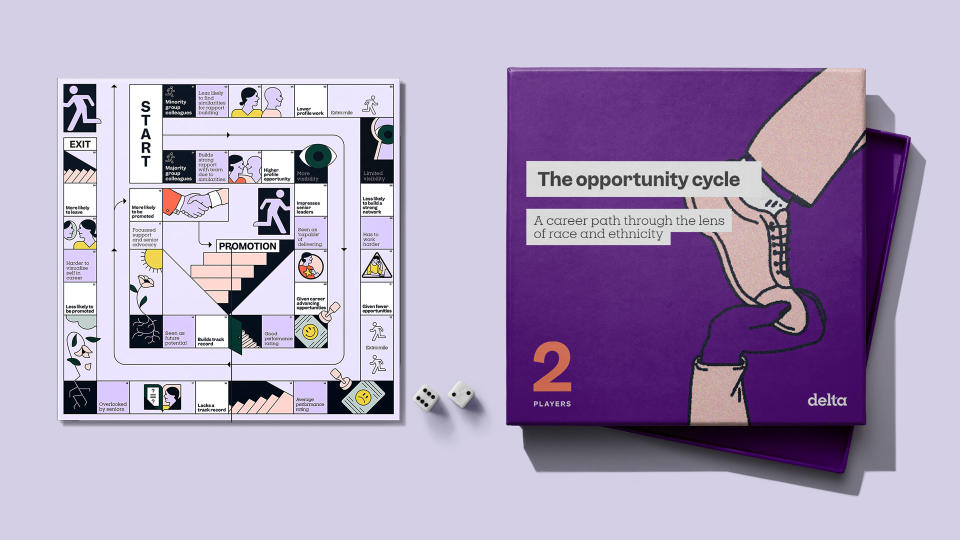
It's not all about 'the baby question', though. "Women's careers are obviously affected when it comes to wanting and having a family, but I also think that the phrase 'people like people like them' perhaps comes into play," says Alice Saunders, creative lead at Nalla. "I also think men are more likely to over-sell themselves and their skills – women can sometimes avoid being dominant due to fear of coming across as bitchy or emotional – but I don't think a man ever has to overthink or necessarily worries about how they're coming across."
Cat thinks there may be "some level of unconscious bias too, in men and indeed women who might be hiring a woman into a more senior role," and may potentially see a man as a "safer hire". "I’m pretty convinced that that happens," she says.
In the design industry, it’s fair to say that clear discrimination against women is not as noticeable as before, but that’s not to say it has completely gone
Kate Curtis, designer at ecommerce agency AYKO Digital , thinks that biases have changed over time. "In the design industry, it’s fair to say that clear discrimination against women is not as noticeable as before, but that’s not to say it has completely gone," she says. "People still form opinions based on gender, but these judgements are now more subtle. The people making these assumptions might not even realise they are doing so."
Vicki points to wider societal issues that affect the creative industries. "Our industry has a 'late night' culture, which isolates parents and in particular females. Many agencies require working late or over the weekend if a pitch comes in, this is problematic for people with children.
"Society needs to shift from waiters automatically giving the bill to the man, to ensuring that the right childcare support structures are in place – school finishing at 3pm is problematic for everyone, as is the cost of nursery fees. Meaning many families face the 'who’s going to work part-time trap'. Mindset needs to shift, discrimination at hiring needs to change too."
The conversation today is much more open, with Gen Z in particular being more comfortable openly discussing their salaries than previous generations
For Klaudija, with a new generation comes new, and better, ways of doing things. "There has historically been a reluctance in the industry to discuss things like salary, recognition and bias for things like promotions," she says. "However, the conversation today is much more open, with Gen Z in particular being more comfortable openly discussing their salaries than previous generations, which is a huge step in the right direction."
Leadership roles
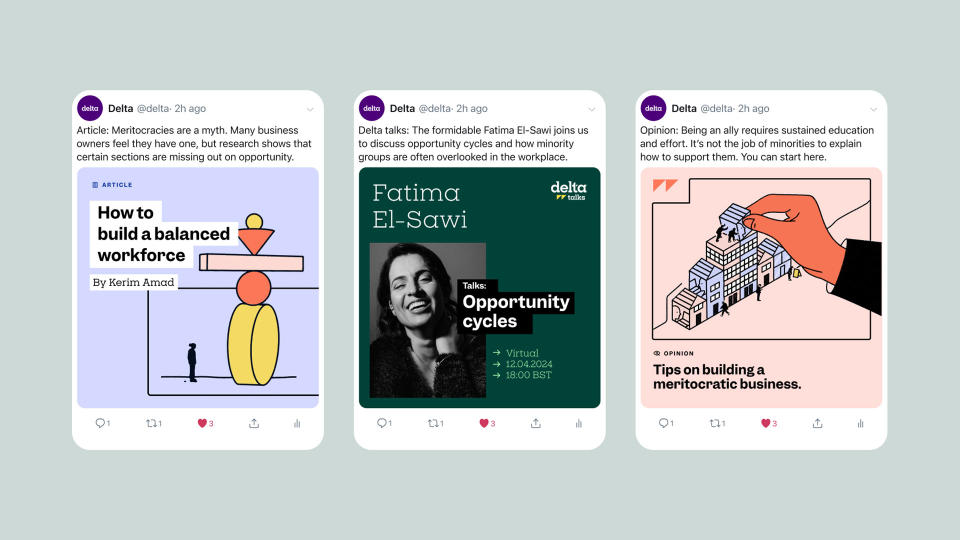
The people I spoke to all agreed on the importance of having female role models. Rowena sums it up nicely. "When only 12.6 per cent of creative directors and 29 per cent of leadership roles in advertising agencies are female, it almost beggars belief. How are we still here?! Well the reasons are numerous and well documented, but fundamentally I think 'you can’t be what you can’t see' is a big factor, for both males and females. It reinforces unconscious bias – both in terms of creative aptitude and leadership ability."
"Leaders who are women offer hugely important visibility, encouragement, confidence and opportunity," says Jess. "It allows younger generations of women to see that it is possible to be a woman leader in a man-made industry."
Having representation at the leadership level can result in a trickle-down effect
KC points to how female leaders can impact a workplace as a whole. "Having representation at the leadership level can result in a trickle-down effect. Once there’s a gender balance at the top, your entire department or agency can be positively impacted. Female leaders can encourage other women to take on more leadership roles and empower them in their careers. It’s healthy for them. It’s healthy for business."
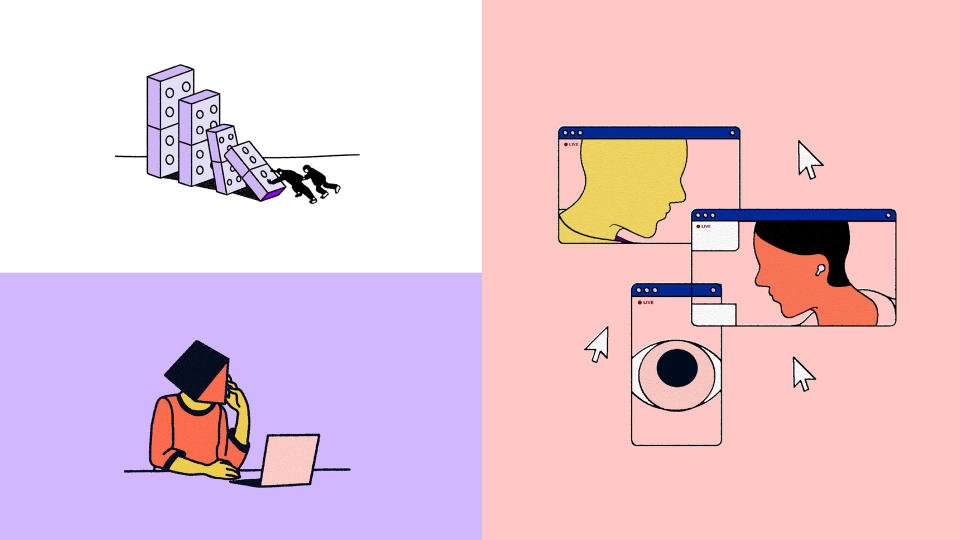
Several people pointed to empathy and openness as traits they think females can bring to the workplace. "Women bring a level of emotional intelligence to the workplace that results in a more empathetic culture," says Rowena. "Empathy is shown not only to colleagues, but also to clients and ultimately the consumers too.
Generally female-led work cultures tend to be kinder and less ego-centric
"Generally female-led work cultures tend to be kinder and less ego-centric," continues Rowena. "One of our company values is Fairness – kindness to each other, empathy for each other, shared responsibility. That doesn’t mean that Denomination is any less competitive or high achieving, but it does make it a different place to work and I think that’s a direct reflection not only on having two female founders, but also strong female leadership in each of our three offices."
What can be done?
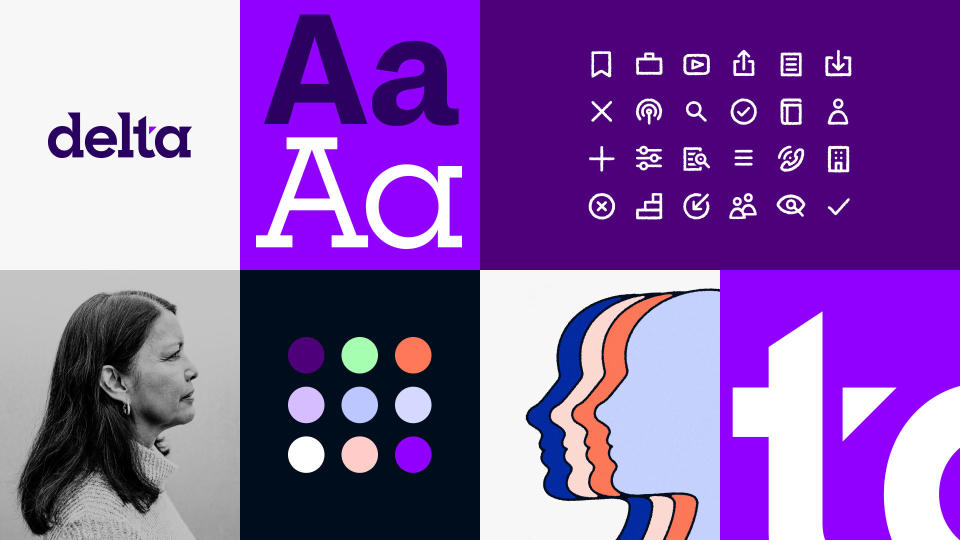
If the above makes you feel despair, then try not to panic. There are both big and small things you can do to champion gender equality in the creative industries.
First of all, take a look at the language you are using in the workplace. "Everyone should be using inclusive language that doesn’t reinforce gender stereotypes, and never make assumptions about people based on their gender," says Kate. "Within the design industry, you can champion gender equality by ensuring everyone, regardless of gender, has an equal opportunity to have input into creative meetings, discussions and decision-making."
Recruitment seems to be an area where small changes can make a big difference, as Jess explains: "As a talent partner, coaching candidates through these areas [such as applying for jobs and asking for more money] is a huge priority, getting people to explore and understand their worth and unapologetically ask for what they want – not what they feel is acceptable – and encouraging business leaders to actively seek out diversity of talent at every level."
It’s on organisations to do everything they can to get the attention of new, and young, talent
"It’s on organisations to do everything they can to get the attention of new, and young, talent," says Klaudija. "Offering mentorship programmes and open days – like we do at Escape Studios with our taster days – are some of the best ways to connect with aspiring young people in the industry."
Still on recruitment, transparent pay is also not only useful for individuals, but for combating the gender pay gap and easing difficult conversations around pay. How&How has a tiered, transparent pay system, Cat explains, and also notes that she's "noticed more and more companies now have to list a salary on a job description – when only a few years ago this was rare. So in this, I have hope."
There are also ways you can make the working environment work better for those who identify as female. "Advocate for flexible work arrangements to help accommodate working mothers by offering remote working, and flexible hours," says Kate. Other initiatives that can help are equal pay, better parental pay and businesses encouraging dual parental leave. Cat also suggests we need government support on things like the "heavy financial burden" of maternity cover and Boneli thinks that being flexible in giving women time off to "take care of themselves or their children" would be useful.

Once you have women in the workplace, there are things you can do to improve their experience. Boneli points to the importance of listening: "Listen. Hear what women have to say. Give them a seat at the table," she says.
Mentorship and helping others can go a long way, with schemes like SheSays and Kerning The Gap facilitating this, although this can be done more informally or as part of workplace intitiatives. "One of the main things I do is staying in touch with my students following graduation," says Klaudija. "Escape Studios places a huge importance on knowledge sharing. We have an extensive and active alumni network of ‘Escapees’ who regularly come back to talk to our students, offer mentorship, guidance, and feedback on their work. This means that our students get first-hand information of industry standards and know the value of their skills on the job market."
In an industry that prides itself on thinking differently and outside of the box, I’d like there to be a few more creative answers on the table
Are we making progress on gender equality in the design industry? "On gender equality when it comes down to roles, I’m not so sure," Cat says. "In an industry that prides itself on thinking differently and outside of the box, I’d like there to be a few more creative answers on the table."
Klaudija is more hopeful. "There is an ongoing effort in the industry to improve both gender and race equality. Organisations like Access: VFX have been working tirelessly to offer opportunities to diverse young people who would otherwise not have considered, or felt empowered to enter, the VFX, animation and games industries."
Comparing the state of the industry now to five years ago when I first wrote about this topic, it feels like we've made some progress, but there's still a long way to go. Perhaps the biggest difference is that pay transparency seems to be a lot more prominent, which is a step in the right direction towards equal pay for all genders. It does feel, however, that until there is systemic change when it comes to maternity and parental leave policies and flexible working, that 'the baby question' may just keep being a barrier to true gender equality.
Is gender equality in the creative industries ultimately possible? "Yes, it’s possible," says Jess, "but it’s a unified effort".
The images in this piece are from a project by Nalla for Delta, a diversity champion.

